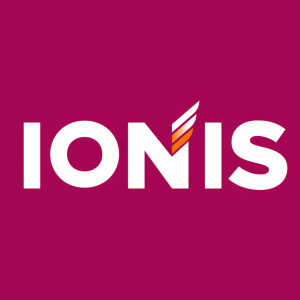Ionis shares positive clinical update from ongoing trial of ION582 for Angelman syndrome
- None.
- None.
Insights
Analyzing...
- Part 1 of HALOS trial evaluating ION582 has completed enrollment with results expected in mid-2024
- ION582 has been generally well tolerated at all dose levels, and participants are continuing to Part 2, the long-term extension portion of the study
- Encouraging EEG and clinical observations support continued development
Angelman syndrome is caused by a loss of function in the UBE3A gene. ION582 is designed to unsilence the paternal UBE3A allele in order to increase production of the UBE3A protein in the brain. Angelman syndrome affects an estimated one in 12,000 to 20,000 people globally1. It presents profound and severe developmental delays in motor, language and cognitive functioning, seizures and ataxia. It is a serious neuro-developmental disorder that presents in early childhood, resulting in complete dependence on a caregiver. There are no treatments specifically approved for Angelman syndrome.
"We are encouraged by the completion of enrollment in the HALOS trial in Angelman syndrome as well as the positive preliminary clinical findings," said Frank Bennett, Ph.D., executive vice president and chief scientific officer of Ionis. "We look forward to reviewing results from the study mid-year next year, which will help us define the next stage of development for ION582. This community has an urgent need for new treatment advances given the significant neuro-developmental delays and challenges faced by people with Angelman syndrome and their caregivers. We look forward to working with the community, investigators, regulators and our partners at Biogen on continued progress."
HALOS preliminary clinical findings shared at the meeting included:
- HALOS is now fully enrolled with 51 patients at 11 global sites.
- To date, ION582 has been generally well tolerated at all dose levels. Adverse events in the trial were consistent with patient medical histories, Angelman diagnosis or related to intrathecal administration.
- In patients evaluable one month after the last Part 1 dose, exploratory clinical findings included:
- A majority of patients showed an improvement in EEG activity. Angelman syndrome is characterized by an increase in slow Delta brain wave activity. Approximately
70% of patients showed a reduction in slow-wave EEG delta activity and over80% showed an increase in faster frequency rhythms. While no direct comparisons should be made, this improvement in EEG activity exceeds that observed in natural history studies over the same time period. - A majority of patients showed improvement in overall functioning on the Angelman Syndrome Clinical Global Improvement Change (SAS-CGI-C) scale, which evaluates clinicians' impressions across 9 key functional areas.
- A majority of patients showed improvement on the total Bayley score, which is a direct assessment of clinical functioning. While no direct comparisons should be made, these changes went beyond those seen in natural history studies over the same time period.
- A majority of patients showed an improvement in EEG activity. Angelman syndrome is characterized by an increase in slow Delta brain wave activity. Approximately
ION582 has received Orphan Drug Designation in the
About Ionis Pharmaceuticals, Inc.
For more than 30 years, Ionis has been a leader in RNA-targeted therapy, pioneering new markets and changing standards of care. Ionis currently has four marketed medicines and a promising late-stage pipeline highlighted by cardiovascular and neurological franchises. Our scientific innovation began and continues with the knowledge that sick people depend on us, which fuels our vision to become the leader in genetic medicine, utilizing a multi-platform approach to discover, develop and deliver life-transforming therapies.
To learn more about Ionis visit www.ionispharma.com and follow us on Twitter @ionispharma.
Ionis' Forward-looking Statements
This press release includes forward-looking statements regarding Ionis' business and the therapeutic and commercial potential of ION582, Ionis' technologies, and other products in development. Any statement describing Ionis' goals, expectations, financial or other projections, intentions, or beliefs is a forward-looking statement and should be considered an at-risk statement. Such statements are subject to certain risks and uncertainties, including but not limited to those related to our commercial products and the medicines in our pipeline, and particularly those inherent in the process of discovering, developing and commercializing medicines that are safe and effective for use as human therapeutics, and in the endeavor of building a business around such medicines. Ionis' forward-looking statements also involve assumptions that, if they never materialize or prove correct, could cause its results to differ materially from those expressed or implied by such forward-looking statements. Although Ionis' forward-looking statements reflect the good faith judgment of its management, these statements are based only on facts and factors currently known by Ionis. As a result, you are cautioned not to rely on these forward-looking statements. These and other risks concerning Ionis' programs are described in additional detail in Ionis' annual report on Form 10-K for the year ended December 31, 2022, and most recent Form 10-Q, which are on file with the Securities and Exchange Commission. Copies of these and other documents are available at www.ionispharma.com.
Ionis Pharmaceuticals® is a registered trademark of Ionis Pharmaceuticals, Inc.
1 Mertz LG, Christensen R, Vogel I, Hertz JM, Nielsen KB, Gronskov K, Ostergaard JR. Angelman syndrome in Denmark. birth incidence, genetic findings, and age at diagnosis. Am J Med Genet A. 2013;161A:2197–203. | |||||
![]() View original content to download multimedia:https://www.prnewswire.com/news-releases/ionis-shares-positive-clinical-update-from-ongoing-trial-of-ion582-for-angelman-syndrome-301985239.html
View original content to download multimedia:https://www.prnewswire.com/news-releases/ionis-shares-positive-clinical-update-from-ongoing-trial-of-ion582-for-angelman-syndrome-301985239.html
SOURCE Ionis Pharmaceuticals, Inc.








